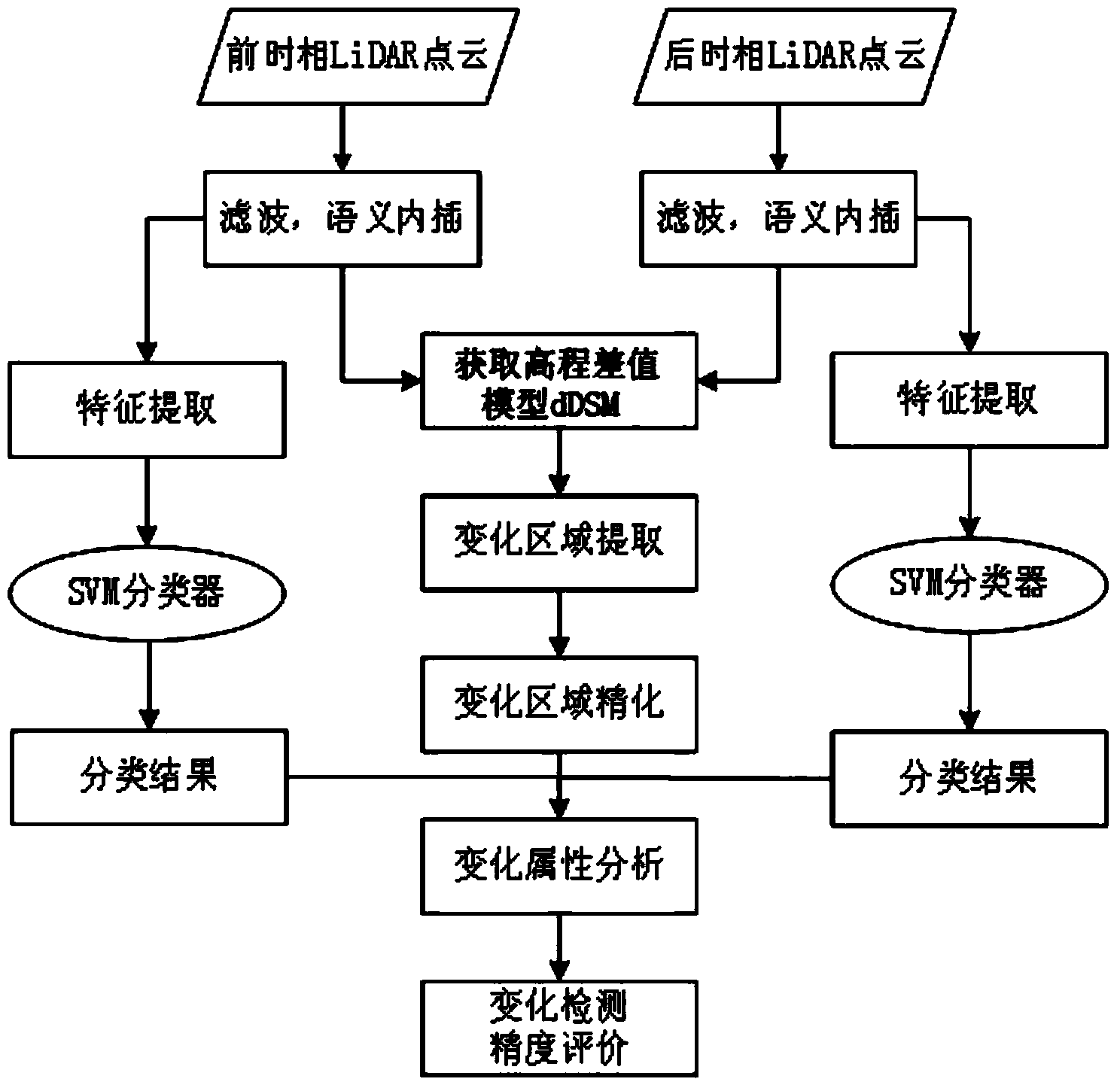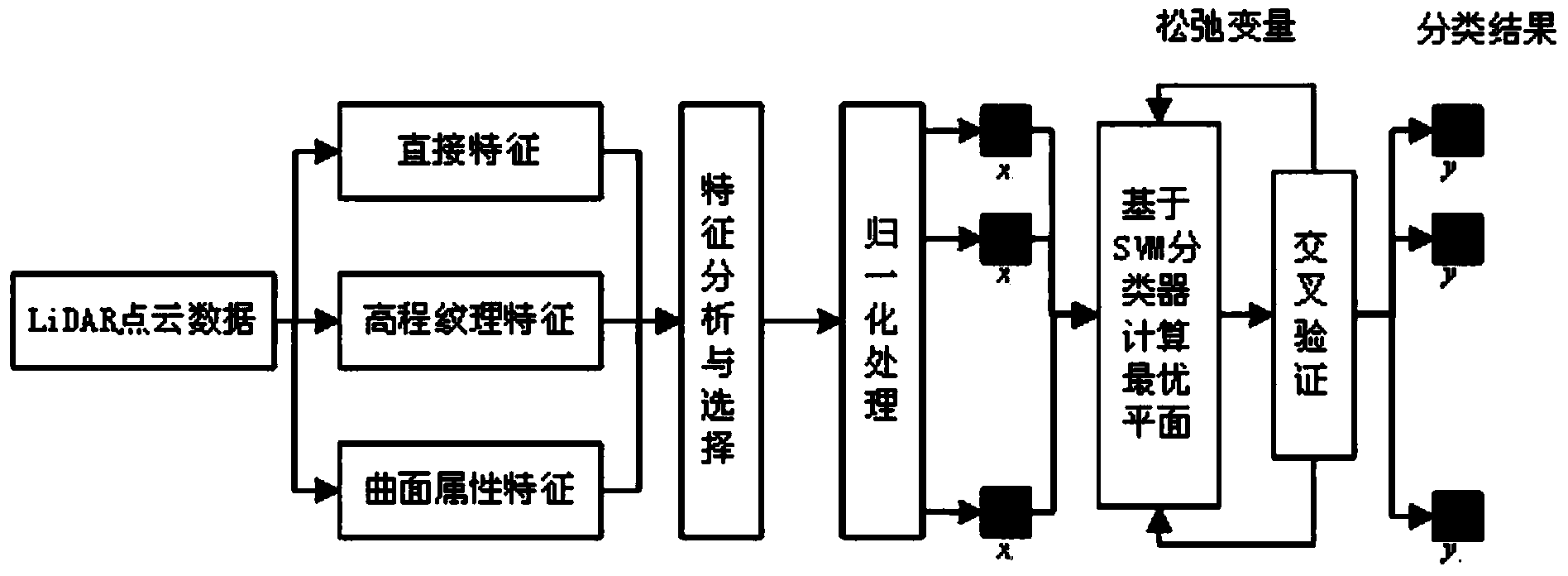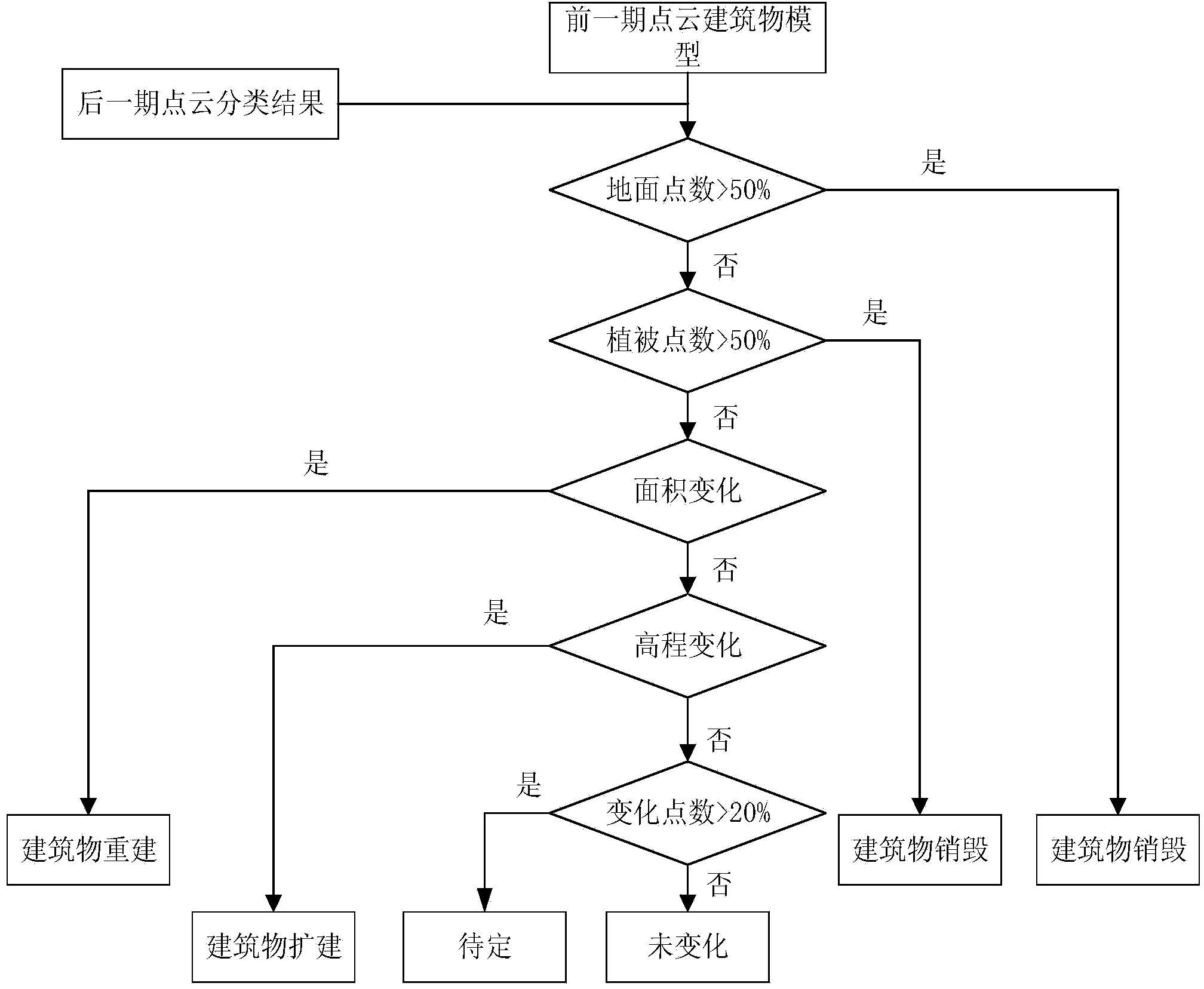Urban building change detection method based on LiDAR point cloud spatial difference analysis
A technology of spatial difference and change detection, which is applied in the direction of measuring devices, electromagnetic wave re-radiation, radio wave measurement systems, etc., can solve the problems of sparse data points and missing data, and achieve the effect of improving classification accuracy and high robustness
- Summary
- Abstract
- Description
- Claims
- Application Information
AI Technical Summary
Problems solved by technology
Method used
Image
Examples
Embodiment Construction
[0044] The present invention will be further described below with reference to the drawings and embodiments.
[0045] Such as figure 1 As shown, the present invention first determines the candidate change area by analyzing the spatial differences of point clouds at different time phases. Then take the candidate change area as a constraint, introduce the SVM algorithm to realize the automatic classification of multi-temporal point clouds; improve the classification accuracy by extracting the LiDAR point cloud texture features and local geometric features; finally, combine the classification results and the spatial analysis results to analyze the building change attributes . Specific steps are as follows:
[0046] Step 1: First, preprocess the point cloud data, including steps such as denoising and filtering. On this basis, linear interpolation algorithm is used to rasterize the point cloud data to obtain DSM and DTM in different time phases. Next, use formula (1) to remove the to...
PUM
 Login to View More
Login to View More Abstract
Description
Claims
Application Information
 Login to View More
Login to View More - R&D
- Intellectual Property
- Life Sciences
- Materials
- Tech Scout
- Unparalleled Data Quality
- Higher Quality Content
- 60% Fewer Hallucinations
Browse by: Latest US Patents, China's latest patents, Technical Efficacy Thesaurus, Application Domain, Technology Topic, Popular Technical Reports.
© 2025 PatSnap. All rights reserved.Legal|Privacy policy|Modern Slavery Act Transparency Statement|Sitemap|About US| Contact US: help@patsnap.com



